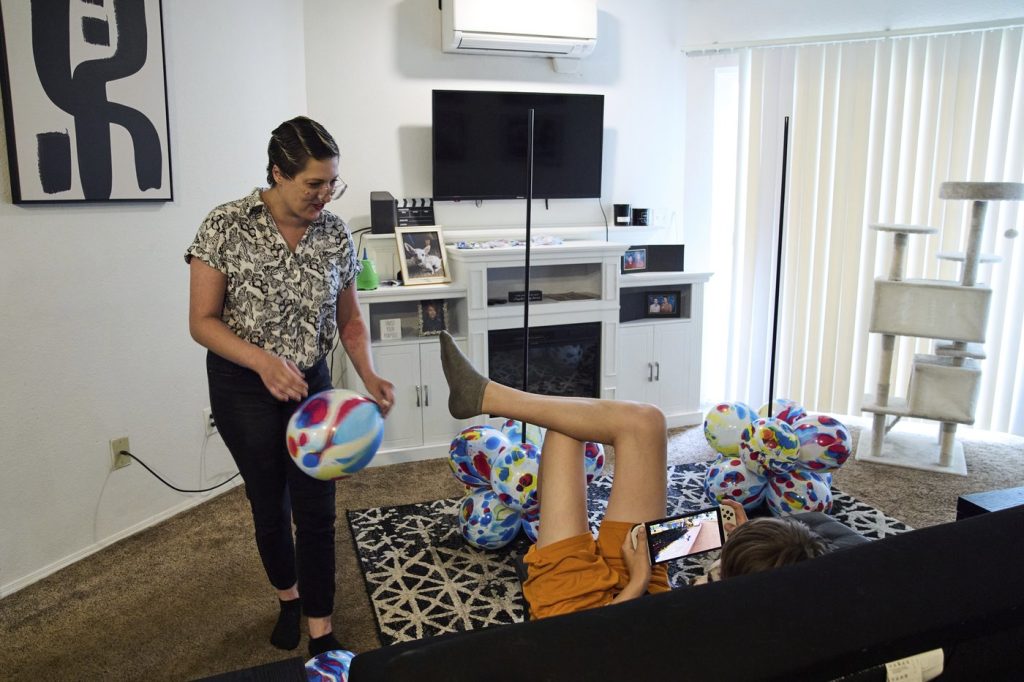WOODINVILLE, Wash. (AP) – A significant concern has been raised regarding more than 1 million low-income households, primarily working families with children, who may face the risk of losing their government-subsidized homes due to a proposal from the Trump administration. This proposal aims to impose a two-year time limit on rental assistance provided through public housing and Section 8 voucher programs.
New research from New York University, obtained exclusively by The Associated Press, suggests that this time restriction could impact as many as 1.4 million households supported by the U.S. Department of Housing and Urban Development (HUD). The report raises alarms about the largely untested nature of such a policy, noting that most local housing authorities that have previously experimented with similar ideas eventually abandoned their pilots.
The NYU report indicates that if current households receiving assistance are subjected to this two-year limit, it may lead to significant disruption and considerable administrative costs for public housing authorities. Once the limit expires, housing authorities would be required to evict these households and find new ones to take their place.
Amid the escalating national affordable housing and homelessness crisis, President Donald Trump's administration is intent on reshaping HUD's extensive role in providing stable housing for low-income individuals. This mission has been a cornerstone of the agency for generations. At a June congressional budget hearing, HUD Secretary Scott Turner argued that reforms such as time limits will address waste and fraud in public housing while encouraging low-income families to work toward self-sufficiency. He remarked, "It’s broken and deviated from its original purpose, which is to temporarily help Americans in need."
While elderly and disabled individuals would be exempt from these time limits, the lack of guidance from HUD regarding the implementation of such policies—how enforcement would work, when the time starts, and how exemptions would be defined—has raised further concerns.
Analyzing HUD's nationwide data over a decade, NYU researchers examined nearly 4.9 million households receiving public housing and Section 8 voucher assistance. They found approximately 2.1 million households could be affected, as they include at least one adult who is neither elderly nor disabled. Notably, around 70% of these households had already been relying on subsidies for two or more years.
In response to the NYU findings, HUD spokesperson Kasey Lovett disputed the study, asserting that ample data supports the idea of time limits, suggesting that prolonged government assistance without incentives discourages able-bodied Americans from working.
The proposed time limits would mostly jeopardize over a million children, as it would disproportionately affect families who are employed yet still earn significantly below the median income for their area. Claudia Aiken, director of new research partnerships for the Housing Solutions Lab at NYU, emphasized that stable housing has a considerable impact on children's health, education, employment, and earning potential.
One of the affected individuals, 33-year-old Havalah Hopkins, has been residing in a public housing unit near Seattle since 2022. She expresses concerns that the impending two-year limit might leave her and her teenage son, who has autism, facing homelessness. The definition of disabled and "able-bodied" by HUD could be crucial in determining whether their family would be impacted by the new restriction.
Currently, Hopkins pays $450 per month in rent—30% of her household income—for a two-bedroom apartment in Woodinville, Washington. When asked about her home, she highlighted her appreciation for the affordability of her housing. Despite attempts at policy reform, evidence suggests a lack of successful outcomes from previous time limit trials. From 17 housing authorities that tested time limits, 11 abandoned the trial altogether. Most failed implementations involved a five-year limit with options for extensions, usually aimed at specific programs or referrals.
While over 3,000 housing authorities exist nationwide, only 139 have been permitted to explore testing time limits while using federal funds. Jim Crawford, director of the Moving to Work Collaborative, noted that discussions around time limits must focus on nuanced, community-specific solutions rather than broad national applications.
Despite the advocated support programs, challenges remain as several housing authorities reported that rental costs were still prohibitively high and good job opportunities scarce. Shawnté Spears of the Housing Authority of the County of San Mateo in California shared that their five-year limits motivated individuals to pursue goals alongside self-sufficiency initiatives. However, tenants still face severe rent burdens and precarious housing stability upon leaving time-limited programs.










